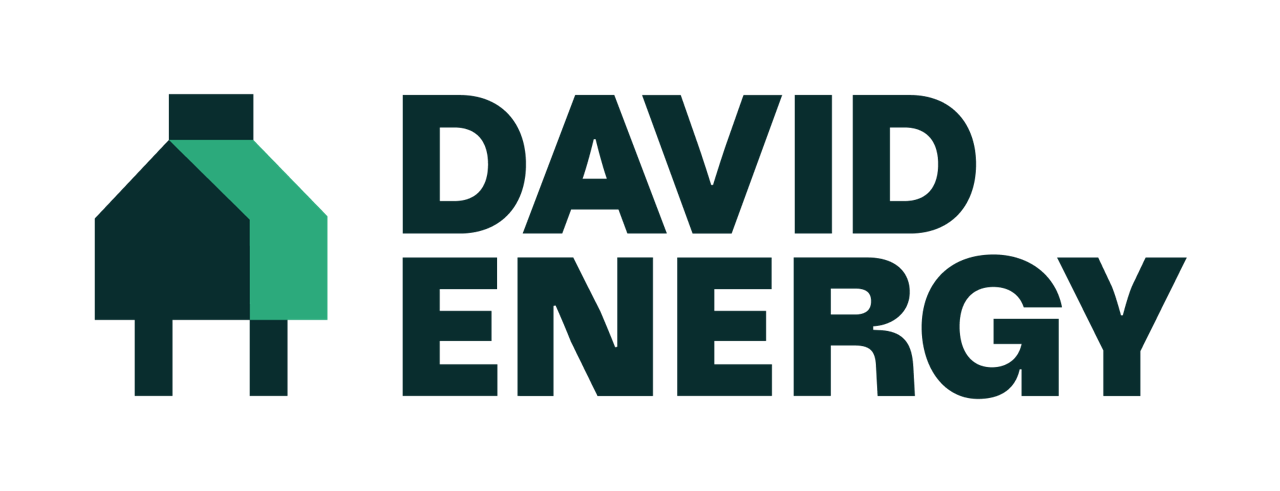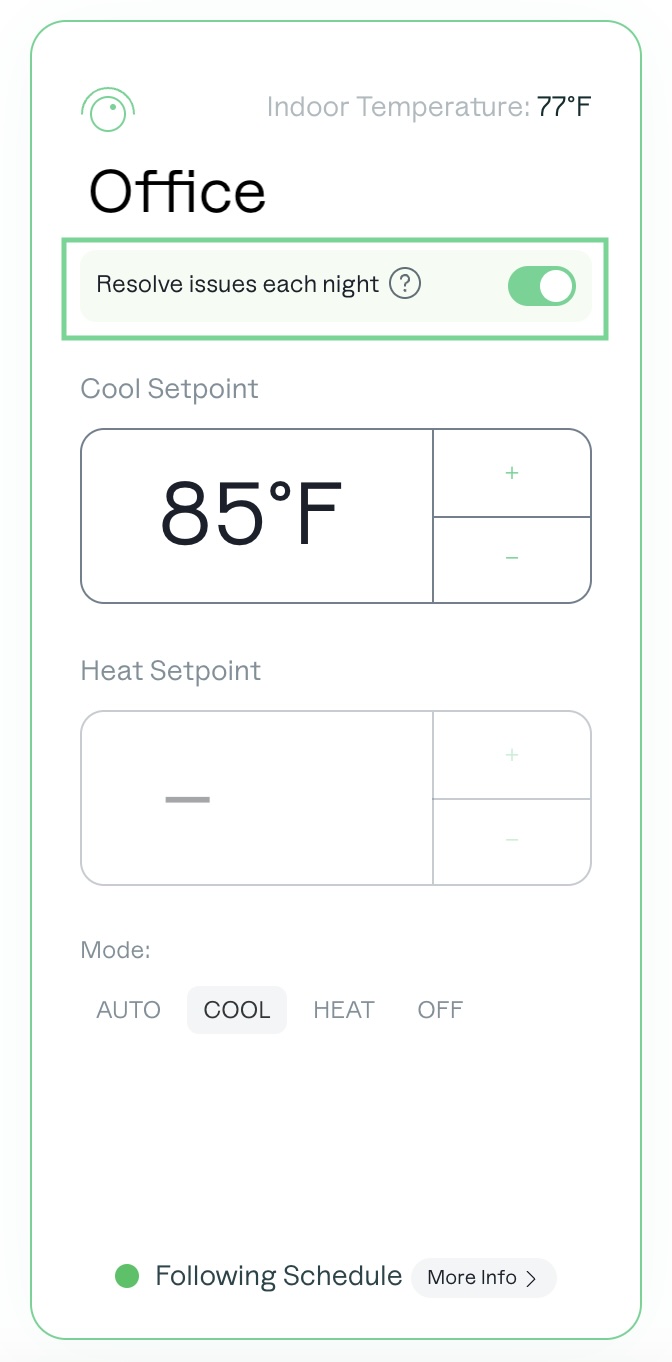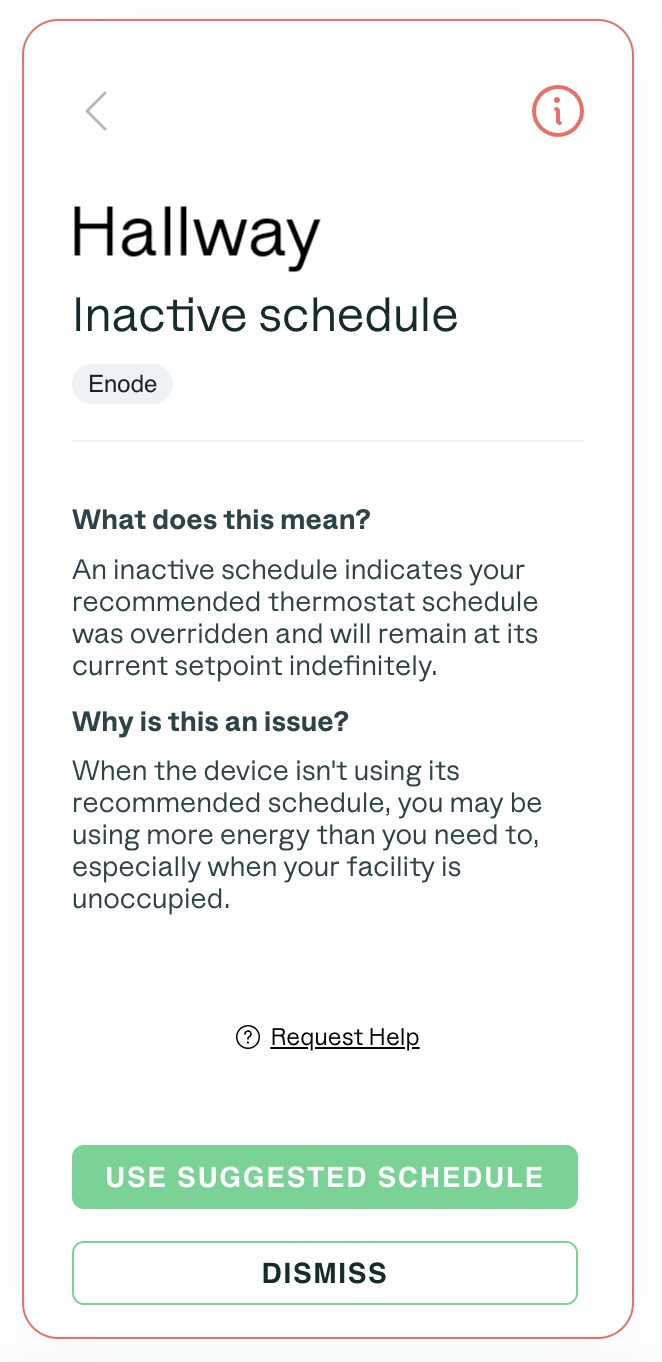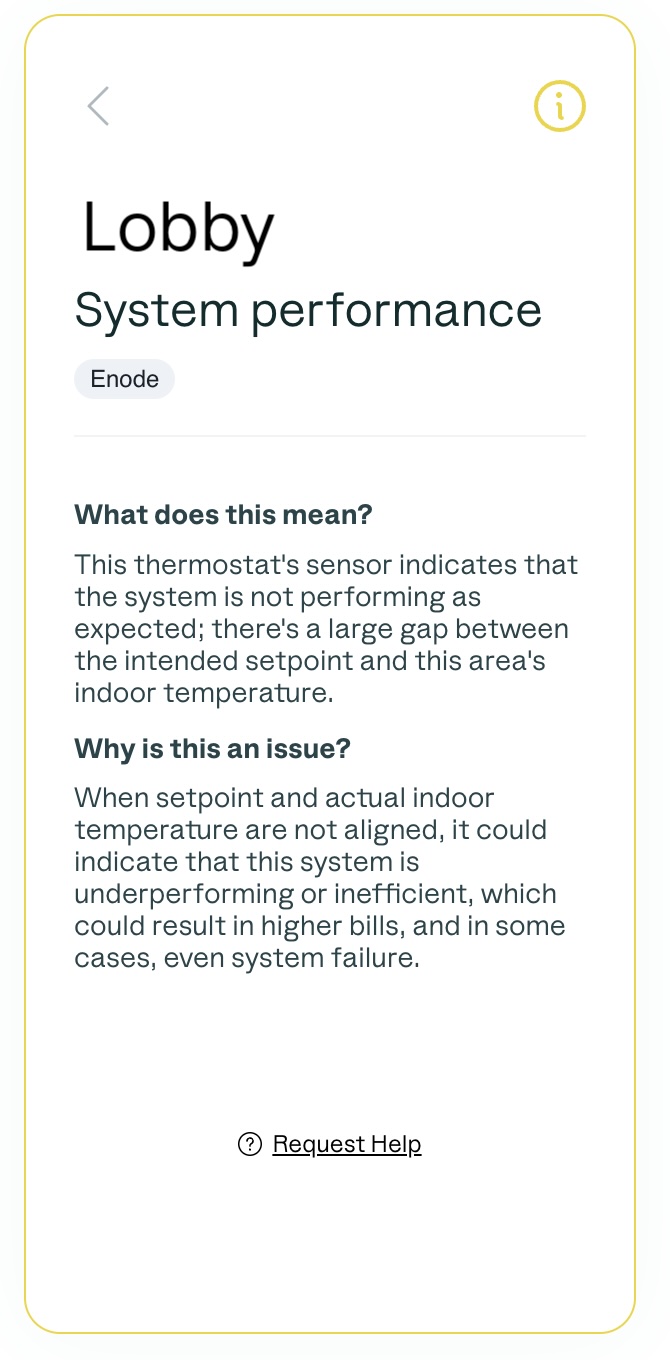Resolving Device Issues
While our features keep thermostats running "in compliance"—or adhering to permanent schedules—we will alert you of issues that we need your help on. Below are some example device issues that we track on your behalf.
Permanent Hold
Also known as a "hold", this is a manual override that sets a consistent temperature indefinitely. The thermostat will maintain the selected temperature continuously until it's manually adjusted or the hold is removed.
To resolve this, enable "Auto-Reset" on your thermostats. This will reset the recommended schedule at midnight daily
Inactive or Inefficient Schedule
An inefficient schedule for a thermostat is one that doesn't align with your occupancy patterns or comfort preferences, resulting in unnecessary energy consumption and potentially higher utility bills. As a result, your system may experience:
Constant high/low temperatures—regardless of location occupancy.
Frequent manual adjustments throughout the day for immediate comfort needs rather than following an efficient schedule.
Wide temperature swings, causing the system to be working constantly.
Overlapping hot/cold periods, which can waste energy and reduce comfort
To resolve this, work with our team to program schedules, if possible. This will allow the system to operate as efficiently as possible—and increase its lifespan.
Unreachable Device
When your device becomes unreachable, it indicates that David Energy has lost connection with it, which might stem from Wi-Fi problems, power interruptions, or issues with the device itself. This loss of connection means we can't keep tabs on its settings or performance anymore, potentially leading to increased bills.
To spot these devices, check your Energy Management Platform dashboard; if they're marked as "Offline," it's a sign they're out of reach, prompting the need for attention to maintain efficient energy management.
To resolve this, review our troubleshooting guides:
System Performance
In this case, the thermostat's sensor is indicating that the system may not be performing as expected. For instance, there is a gap between the intended temperature and that which the system is able to reach.
When setpoint and actual indoor temperature are not aligned, it could indicate that this system is underperforming or inefficient, which could result in higher bills, and in some cases, even system failure.
These alerts are triggered by the following rules
If the thermostat is in active HEAT mode and the Indoor Temperature is reading more than 10° F below the Heat setpoint
If the thermostat is in active COOL mode and the Indoor Temperature is reading more than 10° F above the Cool setpoint
If the thermostat is in active AUTO mode and the Indoor Temperature is reading more than 10° F below the Heat setpoint and more than 10° F above the Cool setpoint




